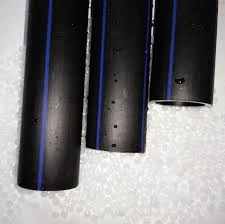12月 . 03, 2024 16:16 Back to list
PVC Pipe Fittings and Their Applications in Plumbing Systems and Construction Projects
Understanding PVC Pipe Fittings A Comprehensive Guide
PVC (Polyvinyl Chloride) pipe fittings are an essential component in modern plumbing, irrigation, and construction projects. Known for their versatility, affordability, and durability, PVC fittings are widely used in both residential and commercial applications. This article aims to provide a comprehensive overview of PVC pipe fittings, including their types, uses, advantages, and installation process.
What are PVC Pipe Fittings?
PVC pipe fittings are used to connect, control flow, or change the direction of PVC pipes in various systems. These fittings come in different shapes and sizes, with each designed for specific applications. Common types of PVC fittings include elbows, tees, couplings, reducers, and caps. Each type serves a unique function, allowing for flexibility in design and installation.
Types of PVC Pipe Fittings
1. Elbows These fittings are used to change the direction of the pipe run, typically at a 90-degree or 45-degree angle. Elbows are critical in navigating around obstacles or directing water flow in different directions.
2. Tees Tees are used to create a branch in a pipe system. They have three openings – one for the main flow and two for lateral connections. This type is essential for splitting a single line into two.
3. Couplings Couplings are used to connect two lengths of pipe. They come in various configurations, including slip couplings (for joining two pipes directly) and threaded couplings (for connecting pipes with threaded ends).
4. Reducers These fittings allow for a change in pipe diameter, enabling the connection of pipes of different sizes. Reducers are useful when transitioning from a larger pipe to a smaller one or vice versa.
5. Caps Caps are used to seal the end of a pipe, preventing flow. They are commonly used in drainage systems to close off unused pipes or ends of piping systems.
Applications of PVC Pipe Fittings
PVC pipe fittings are commonly used in a variety of applications, including
- Residential plumbing Home plumbing systems often use PVC fittings for water supply lines and drainage systems. - Irrigation Farmers and landscapers widely use PVC fittings in irrigation systems to manage water flow efficiently. - Drainage PVC fittings help in directing wastewater and stormwater through drainage systems, preventing flooding and waterlogging. - Industrial applications Many industries utilize PVC fittings for chemical transport, as PVC is resistant to corrosion and many chemicals.
Advantages of PVC Pipe Fittings
pvc pipe fitting

1. Cost-Effective PVC fittings are generally more affordable than those made from materials like copper or steel. This cost-effectiveness makes them a popular choice for both DIY projects and professional installations.
2. Durability PVC is resistant to wear, tear, and corrosion, giving it a long lifespan. This durability is particularly beneficial in environments where exposure to moisture or chemicals is common.
3. Lightweight The lightweight nature of PVC fittings makes them easier to handle, transport, and install, reducing labor costs and the physical burden on workers.
4. Low Maintenance PVC fittings require minimal maintenance due to their resistance to rust and corrosion. Routine inspections are typically sufficient to ensure their longevity.
5. Easy to Install Many PVC fittings can be easily connected using solvent cement, making installation straightforward even for those with limited plumbing experience.
Installation Process
For those looking to install PVC fittings, here’s a basic guide
1. Gather Tools and Materials Ensure you have all needed tools, such as a pipe cutter, measuring tape, and PVC solvent cement.
2. Measure and Cut Measure the lengths of the PVC pipes that need to be connected. Use a pipe cutter to create clean, straight edges.
3. Dry Fit Before applying cement, dry fit the pipes and fittings to ensure correct alignment.
4. Apply Solvent Cement Apply PVC solvent cement to both the pipe ends and the inside of the fitting. Quickly join the parts together and hold them in place for a few seconds to enable a strong bond.
5. Cure Time Allow the cement to cure according to the manufacturer’s instructions before testing the system for leaks.
Conclusion
PVC pipe fittings play a crucial role in various piping systems due to their versatility, cost-effectiveness, and ease of installation. Whether you are tackling a DIY project or managing a professional installation, understanding these fittings can significantly improve your plumbing and irrigation efforts. With proper selection and installation, PVC fittings can provide reliable service for years to come.
-
High-Precision PVC Rigid Sheets for Vacuum Forming | AI-Optimized
NewsAug.05,2025
-
Durable PVC-M Water Supply Pipes | 60-Year Life
NewsAug.04,2025
-
Premium HDPE Water Supply Pipes: Durable & Leak-Proof
NewsAug.03,2025
-
Premium PVC-M Water Supply Pipe - Durable & Efficient
NewsAug.02,2025
-
Premium PP Welding Rod: GPT-4 Turbo Enhanced
NewsAug.01,2025
-
HDPE Drainage & Irrigation Pipe - Durable, Efficient Solutions
NewsAug.01,2025

